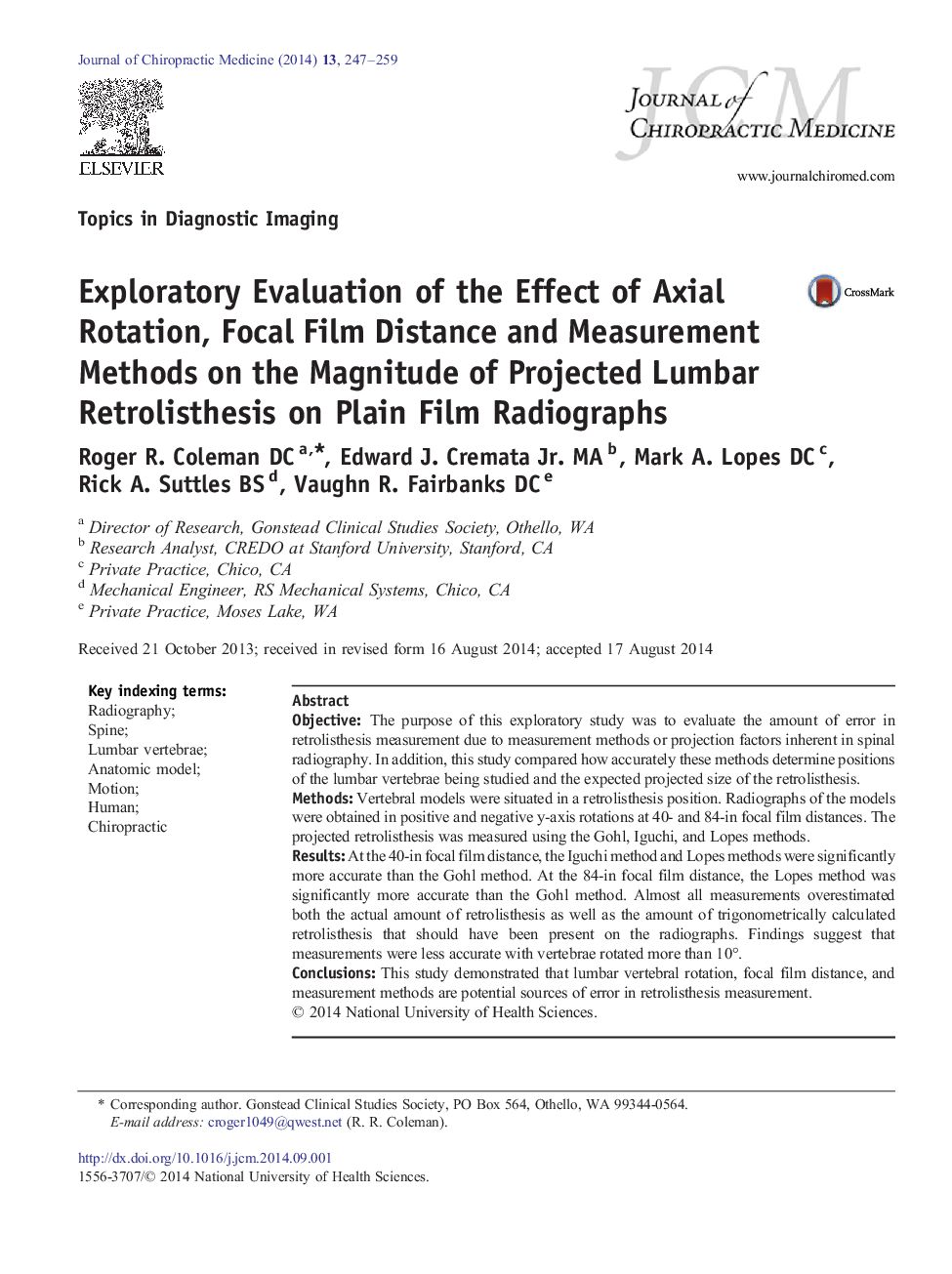| Article ID | Journal | Published Year | Pages | File Type |
|---|---|---|---|---|
| 2620039 | Journal of Chiropractic Medicine | 2014 | 13 Pages |
ObjectiveThe purpose of this exploratory study was to evaluate the amount of error in retrolisthesis measurement due to measurement methods or projection factors inherent in spinal radiography. In addition, this study compared how accurately these methods determine positions of the lumbar vertebrae being studied and the expected projected size of the retrolisthesis.MethodsVertebral models were situated in a retrolisthesis position. Radiographs of the models were obtained in positive and negative y-axis rotations at 40- and 84-in focal film distances. The projected retrolisthesis was measured using the Gohl, Iguchi, and Lopes methods.ResultsAt the 40-in focal film distance, the Iguchi method and Lopes methods were significantly more accurate than the Gohl method. At the 84-in focal film distance, the Lopes method was significantly more accurate than the Gohl method. Almost all measurements overestimated both the actual amount of retrolisthesis as well as the amount of trigonometrically calculated retrolisthesis that should have been present on the radiographs. Findings suggest that measurements were less accurate with vertebrae rotated more than 10°.ConclusionsThis study demonstrated that lumbar vertebral rotation, focal film distance, and measurement methods are potential sources of error in retrolisthesis measurement.
